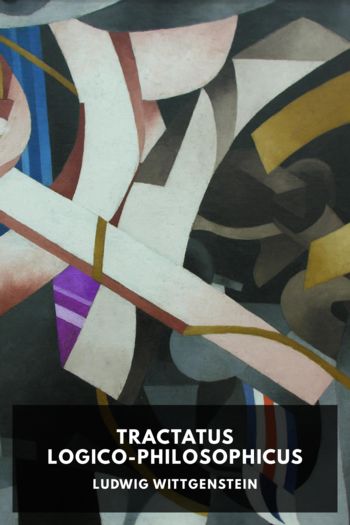Monty Python and Philosophy by Gary Hardcastle (best novels for beginners .TXT) 📗

- Author: Gary Hardcastle
Book online «Monty Python and Philosophy by Gary Hardcastle (best novels for beginners .TXT) 📗». Author Gary Hardcastle
3
What Mr. Creosote Knows About Laughter
NOËL CARROLL
And by his side rode loathsome Gluttony,
Deformed creature, on a filthie swyne:
His belly was up-blown with luxury,
And eke with fatnesse swollen were his eyne,
And like a Crane his necke was long and fyne,
With which he swallowed up excessive feast,
For want whereof poore people oft did pyne;
And all the way, most like a brutish bear,
He spued up his gorge, that all did him deteast.
...
In shape and life more like a monster, than a man.
—Edmund Spenser, The Faerie Queene
Part VI: “The Autumn Years” of Monty Python’s The Meaning of Life begins with a song about the glories of having a penis which is appreciated by all the audience in the cabaret, including the talking fish in an aquarium in the vicinity of the piano. The fish have the human faces of the Monty Python crew superimposed over their bodies and they call to mind something of the unsettling hybrid creatures found on hellish landscapes by Hieronymus Bosch, the fifteenth- and sixteenth-century Dutch artist. Their enjoyment of the ditty, however, quickly vanishes when they catch sight of the entrance of Mr. Creosote into the restaurant. “Oh shit!” cries one of them as they whiz off-screen.
Mr. Creosote, a gargantuan figure, lumbers into the dining room. The music that accompanies his entry recalls the giant shark’s in Jaws, and his belly is so ponderous it nearly scrapes the floor. His face, framed by muttonchops, is swollen to the point of swinishness. He is dressed in a tuxedo but his body is mis-shapen, more like a pyramid of wobbling flesh than a human form. As Creosote ambles to his table, he commands a flurry of attention from the sycophantic maitre d’. This is obviously a very, very good customer, one who could eat whole families under the exceedingly expensive tables of this lavish eatery.
Creosote is also a very churlish customer. He is consistently curt to the point of rudeness. When asked how he is faring, he says “Better” and pauses before completing his thought—“Better get a bucket.” In other words, he never responds civilly, but only commands imperiously. When the aforesaid bucket is brought to him, he proceeds to vomit into it with the force of a fire hose in complete obliviousness to his surroundings and to the sensibilities of his fellow diners. He doesn’t do this once but several times and then repeats the spectacle on the back of the cleaning woman who is trying to clean up the mess he is making. He shows no concern for anyone else; his inclinations are the only lights by which he steers. In every way, Creosote is crude, gruff, and utterly selfish.
Thus, his vomiting elicits no sympathy. He treats it as his privilege; he’s paying for it; so he’ll do whatever he wants. Creosote clearly, as a matter of course, stuffs himself to the point that his body cannot absorb the mass he ingests. He retches in order to gorge himself again. He is gluttony personified.
The maitre d’ hands him a menu; he disgorges himself all over it. The servant has to wipe it off so that he can read it. Moreover, it should be added, this vomit looks pretty convincing. Even the most ardent Python fan is apt to feel a twinge of nausea coming on.
Hearing the specials, all delicacies of a diversity befitting the original Gargantua, Creosote orders the lot, mixed into a bucket with eggs on top, along with a double portion of pâté, six bottles of wine, two magnums of champagne and perhaps some ale. Pope Gregory the Great defined gluttony as eating too soon, too delicately, too expensively, too greedily, and too much. Creosote’s nausea indicates he is not ready for his next meal; it is too soon. He eats expensive delicacies as if they were potato chips. And he eats too much; he eats the entire menu. It is no wonder that Michael Palin called this routine a “Gothic Extravaganza.”12 It is like an illustration of one of the Deadly Sins.
Creosote, reminding one of an image out of James Ensor, the nineteenth-twentieth-century Belgian expressionist, continues to vomit as he eats. Other customers are disgusted and start leaving to the visible chagrin of the maitre d’; some are heaving themselves. The maitre d’ accidentally steps into Creosote’s pail of vomit and Creosote erupts upon his leg, to the evident great annoyance of the maitre d’. The maitre d’ is reaching the end of his tether. Finally, Creosote is finished, but the maitre d’ willfully tempts him, even prods him, to take one more bite, just a bit of a thin wafer of mint,





Comments (0)